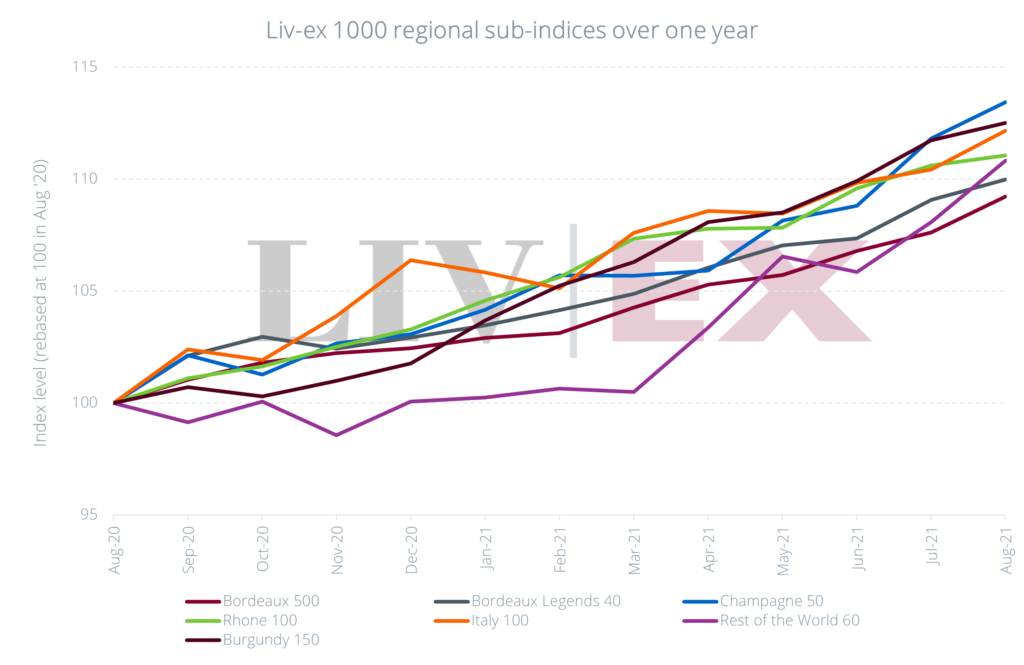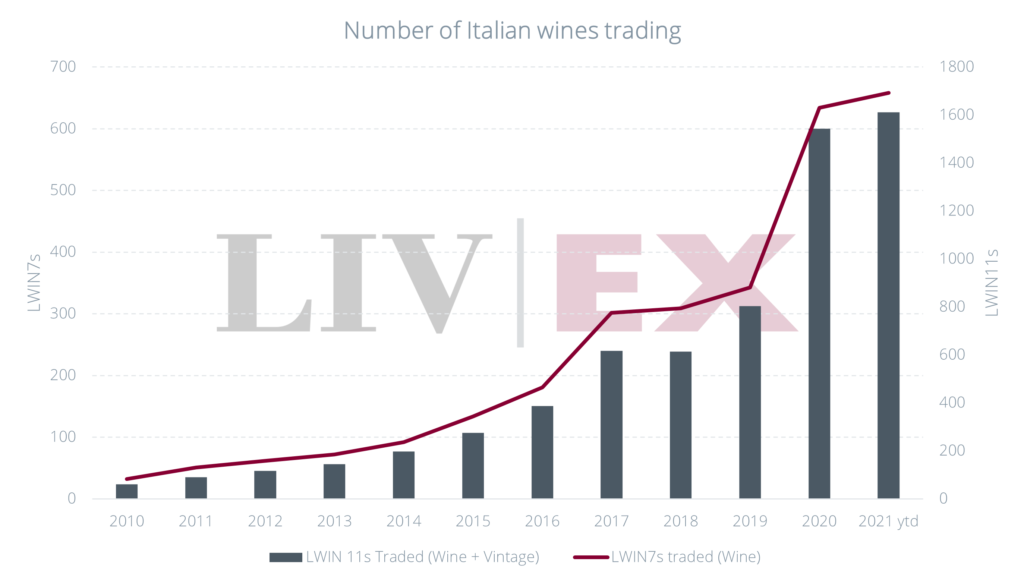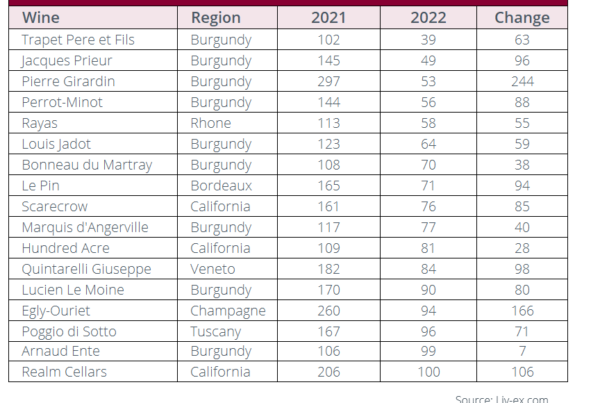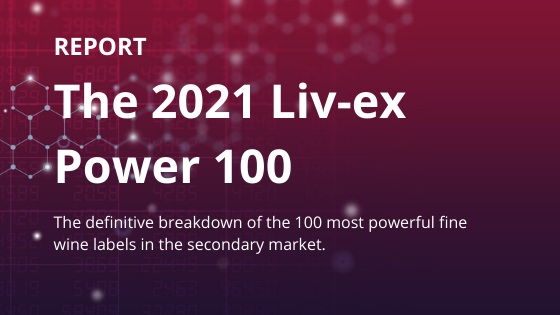Italy’s secondary market trade is diversifying, as previously underrepresented Italian regions gather momentum.
London UK: Italy’s secondary market trade is diversifying, as previously underrepresented Italian regions gather momentum.
This is according to a recent report from Liv-ex (the London International Vintners Exchange) called ‘Italy’s underdogs’, which explores the country’s secondary market development outside of Tuscany and Piedmont.
The report looks at the reasons behind Italy’s growth in recent years, which wines are trading, and further in-depth analysis on the top wines of Veneto, Abruzzo, Umbria, and elsewhere.
Liv-ex is the London-based global marketplace for the wine trade, where 550 fine wine businesses from around the world buy and sell wine. What happens on the exchange is a reliable indicator of the health of the secondary wine market.
Rising prices and increasing trade
Fine wine prices have been rising across all regions. Of the Liv-ex 1000 index, which tracks the price performance of 1000 wines from across the world, the Italy sub-index is now the third-best performer of the past year, up 12.2%.
Its long-term price performance has been characterised by low volatility and steady returns. The Italy 100 sub-index has appreciated 240% since its creation, having enjoyed a particularly good half-decade.
Increased diversity and more active participants from the US, UK, Asia, and Europe has led to more Italian fine wines trading. For example, Italy’s share of secondary market trade currently sits at a record high of 16% year-to-date, meaning that Italy is now the third most traded category on the secondary market after Bordeaux (40.5%) and Burgundy (20.4%).
How many Italian wines trade on the secondary market?
Italy is also one of the few regions where the number of unique wines trading (i.e. number of wines with a vintage, as measured by LWIN11) year to date has already surpassed the levels achieved for the whole of 2020, by 5.3%.
This sustained increase points to a significant market expansion and heightened demand for Italian fine wine. More Italian brands have entered the secondary market, pushing trade across a wider array of vintages too. Between 2010 and 2021, the increase in Italian wines (LWIN11s) traded has been an impressive 2,566%.
Conclusion
The increased diversity of Italian wines trading on the secondary market would not have been possible without Italy’s strengthened image as a competitive fine wine force on the international stage.
The wines of Tuscany and Piedmont have lured in buyers, who are now exploring other Italian regions. The rare wines made from Nebbiolo in the north have contributed to the country’s impressive price performance and sparked investment interest, while the critically acclaimed Super Tuscans (combined with their brand strength and larger quantities) have generated the majority of trade and offered steady returns and low volatility.
Italy’s exemption from the 25% US tariffs on European wine (imposed in October 2019; suspended in March 2021) contributed to heightened demand for the country’s offerings from American buyers. In 2020, US merchants focused mostly on Italian wines, which took up 27.4% of total trade, compared to 26.5% from Bordeaux and 11% from Burgundy.
As recently explored, another traditionally Bordeaux-dominated market, Asia, has also turned its eyes towards Italy. Wines from Barbaresco feature among the most active wines traded by volume in Asia in 2021, highlighting the ongoing strength of Italy on the secondary market.
This demand has led to greater exposure from more Italian regions, including many of Italy’s “underdogs” which entered the market in the last two years.
As for the future, the quality and value offered by Italian wines seems to be attracting more active players globally and Italy’s full potential is yet to be truly unveiled.
About Liv-ex
Liv-ex is the global marketplace for the wine trade. Along with a comprehensive database of real-time transaction prices, Liv-ex offers the wine trade smarter ways to do business. Liv-ex offers access to £80m worth of wine and the ability to trade with 550 other wine businesses worldwide. They also organise payment and delivery through their storage, transportation, and support services. Wine businesses can find out how to price, buy and sell wine smarter at www.liv-ex.com.
Liv-ex prices
Liv-ex data is trusted by businesses in 44 countries worldwide and is quoted by authorities like Bloomberg and Reuters as the industry standard.
The reason for this is because other sources of fine wine price information and indices base their calculations on list prices. These are advertised prices, often collected from sellers who may be advertising wine that they don’t even have in stock. There is no firm commitment to buy or sell at an advertised price. The real value of the wine may be higher or lower than listed.
Liv-ex can uniquely provide prices from real transactions among the wine trade. These are historic trade prices, as well as firm commitments to buy or sell on the market at a given price. All transactions are standardised by condition and tax status, allowing you to make like-for-like comparisons. Our members value this because it is real, proven price information.
Click here for more about Liv-ex prices.
The above press release is a snapshot of Liv-ex’s report on Italy’s underdogs which is available exclusively to Liv-ex members. For more information on Liv-ex membership, click here. Members of the press can fill out our press request form for more information.







